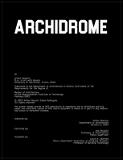| dc.description.abstract | Buildings are only one in a family of facades that define any architectural project. Advancing through the rungs of academia and practice, Architects become diligent estheticians, building and maintaining carefully moisturized semblances. As mediatic cosmetologists, they are acutely aware of the public relations exercises that build their identities as practitioners.
Every drawing, gesture and public appearance delicately preen a group of ideologically loaded semiotic bodies. A design project is not only a response to a set of site conditions - context, public, environment - but a gesture constructing the constellation of images that build up the public profile of the Architect. These gestures are not purely made in careful consideration of the stakeholders of a project but act simultaneously as a performative act - profile building. After construction, the brand built by the Architect embodied in a structure is no longer only part of their project to build themselves but is now appropriated by other stakeholders; it is now a profile-building tool for those who own it, inhabit it, the municipality which funded it, the urban project it constructs. Architects then design purposeful objects less than they can act as mediatic figures that manicure embodied advertisements of ideological positions.
Design gestures become signifiers of a specific politic, but they can only act as such: pageantry. The focus of this thesis is the layer of discursive and psychological strata, the psychic skin, which is termed Faciality. The project is to graft this virtual skin for analysis and demonstrate how it builds the brand of a built project, the brand of the user, and the brand of the Architect through analysis and experiments. Things are more than just vehicles for physical properties in our society of lexical objects. | |
